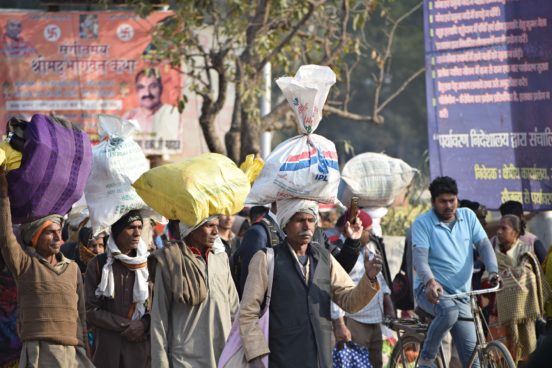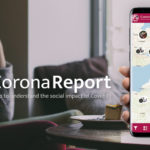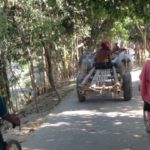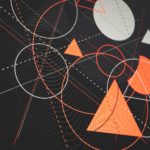The scale and severity of the coronavirus pandemic is a shock to health systems. It is a shock to economies and governments. It is also a shock to the life sciences, which were meant to anticipate a pandemic of this magnitude, but failed to do so. The “life sciences” in question are virology, epidemiology, biomedicine and pharmacology. But the social, political, and economic life sciences were also unprepared for COVID-19. It will take an in-depth autopsy to see why anyone in the social sciences believed the people in medical sciences when they told us it would only be “the pandemic perhaps” (Caduff 2015) rather than the pandemic for sure—and probably soon. COVID-19 is not only a viral pandemic, it is also a pandemic of epistemic unpreparedness.
How life is valued has become an urgent question (if it hasn’t been an urgent question long before). As the social life sciences are reeling from coronashock, how can we theorize the value of life to make sense of the current moment? At its most basic, life is value, and enhancing life means to enhance value. Living means valuing, and what makes people’s lives better is valuable. But what, exactly, “improves life”? To say that life values living “still doesn’t answer the question of what it means to ‘improve people’s lives,’ and on that, of course, rests everything” (Graeber 2019: 208). What does it mean to “make life better” in coronatimes? Lockdowns have been enacted in many countries, with profound consequences. What is the value of “lockdowns,” are they worth it?
The “lockdown” has emerged as the signature biopolitical response to coronashock. The rationale of the lockdown is to delay the spread of coronavirus infections. The value of lockdowns is that they “buy time.” Without lockdowns, hospitals might be overrun by patients and too many lives might be lost before a biomedical treatment can perhaps be found. To date, no vaccine or any other pharmaceutical therapy is available. COVID-19 reduces the scope of biomedicine to acute intensive care: keeping people alive on respirators if the infection takes a bad turn. The only interventions available are about population control. Some of these techniques include contact tracing and testing for acute infections. Other measures control individual movement and behaviors. These include border checks, travel bans (both internal and cross-border), quarantine (at home or in public facilities), physical distancing, closing of workplaces and educational institutions, canceling public events, closing public transport, and wearing face masks (Hale et al. 2020). Any of these measures can be advisory or mandatory. A “lockdown” is a maximal combination of these measures, with a focus on prohibiting citizens’ physical movement outside their homes. Lockdowns are investments in population health that come at a huge cost in other areas of life. But what are these “costs,” and what are these “other areas of life”?
SARS-CoV-2 was first detected in the city of Wuhan in China’s Hubei province in December 2019. For several weeks, the Chinese authorities suppressed news reporting about the spread of the new disease. Li Wenliang, a Wuhan doctor who used social media to alert medical colleagues of the disease was forced by the police to retract everything he had said; he died on 7 February with COVID-19 (Buckley & Myers 2020). China officially notified the World Health Organization of the outbreak on 31 December 2019. In early January, WHO issued its first guidance on how to deal with the virus “based on experience with SARS and MERS and known modes of transmission of respiratory viruses” (WHO 2020). The first case outside China was confirmed in Thailand on 13 January 2020. The first WHO committee meeting on whether COVID-19 should be classified as “public health emergency of international concern” (PHEIC) took place on 22-23 January. A consensus was not formed at the time, but one week later, WHO decided that the outbreak is a PHEIC. On 23 January, the Chinese government imposed a fēng chéng (“blockade line”), first on Wuhan and soon on other Chinese cities. On 11 March, WHO classified the outbreak as a “pandemic.” On 13 March, the Chinese government partially lifted the lockdown, and ended it officially on 8 April 2020.
Most governments were initially skeptical of lockdowns. Governments asking citizens to stay indoors and avoid meeting others has been used in epidemics many centuries before. But the Wuhan lockdown was unprecedented in its scale, its length, and its administrative rigor. On 23 January, Gauden Galea, the WHO representative in China, said that the Wuhan lockdown is an extreme intervention that needs to be carefully evaluated: “The lockdown of 11 million people is unprecedented in public health history, so it is certainly not a recommendation the WHO has made” (Reuters 2020a). Nevertheless, beginning from January, many governments started to issue travel warnings and some moved to close air traffic with China. Italy, for example, suspended flights to and from China as early as 31 January (thousands of Chinese tourists then travelled to Italy via Frankfurt). The same day, the US government declared COVID-19 a “public health emergency” and mandated a 14-day quarantine for passengers who had been to Hubei. From February, country-wide lockdowns that included closure of businesses, schools, and restrictions on all but essential travel came into effect in the US on 15 March. In the UK, similar measures started on 23 March. In India, a country-wide lockdown was imposed on 24 March, stopping the movement of its entire population of 1.3 billion people. The measures in India are the strictest in the world (e.g., not even outside physical exercise is allowed). Most governments hesitated to impose lockdowns but felt pressured to act by the exponential spread of the virus. On 6 March, there were over 100,000 confirmed cases worldwide. Cases numbers doubled by 17 March, doubled again by 23 March, and doubled again by 30 March. By 15 April, more than 2 million people had confirmed infections and 140,000 people had died with the virus (Center for Systems Science & Engineering 2020). By March 2020, the Wuhan lockdown had become the “Great Lockdown” of the world (International Monetary Fund 2020).
Governments in both the US and the UK were reluctant to disrupt their national economies by imposing Wuhan-style lockdowns, but by mid-March the spread of the infection threatened to make hospitals collapse under a “tsunami” of people needing intensive care. Until early March, the US and UK declared their countries would “stay open for business,” both denied that COVID-19 was much to worry about, and both failed in preparing their health services for the massive rise of infections. Boris Johnson, referring to the Wuhan lockdown in a speech on 3 February, said that Brexit Britain values freedom: “humanity needs some government somewhere that is willing at least to make the case powerfully for freedom of exchange, some country ready to take off its Clark Kent spectacles and leap into the phone booth and emerge with its cloak flowing as the supercharged champion of the right of the populations of the Earth to buy and sell freely among each other” (cited in Helm, Graham-Harrison & McKie 2020). Dominic Cummings, the UK prime minister’s chief adviser, summarized the initial strategy: “protect the economy, and if that means some pensioners die, too bad” (cited in Walker 2020). Similar arguments were made in the US (e.g., Katz 2020). Letting the virus “run its course” while protecting the economy is a typically neoliberal policy response. Free movement and free markets are more important than saving as many lives as possible. Governments are not meant to disrupt the free market for the sake of population health. And yet even the US and the UK governments eventually followed other countries into lockdown, “deliberately inducing one of the most severe recessions ever seen” (Tooze 2020). Governmental attempts at stalling the health disaster accepted that lockdowns would do unfathomable harm to the economy. The world is staring at the worst recession in a century. Businesses are going bankrupt and people are losing their jobs at catastrophic rates. Even countries that did not impose lockdown measures are experiencing an unprecedented economic shock due to the disruption of supply chains, bans on travel, and trillions of dollars of capital flight.
In India, the socioeconomic fallout of the lockdown is even more severe than in the US and the UK. The lockdown hit India’s large population daily wage laborers particularly hard. 380 million people in India work in the informal economy. Millions of them are rural-urban migrants. After the lockdown was imposed, hundreds of thousands of migrant laborers started to walk by foot to rural areas, some of them for hundreds of miles. The government’s response strongly discriminates along entrenched social divisions, such as that the majority of casual laborers are from lower castes and ethnic minorities. The strict measures imposed in India caused extreme economic hardship, with hunger and much collateral damage to people’s health and wealth. In turn, it remains unclear if the Indian lockdown will protect many people from dying with SARS-CoV-2 in the long run. Public health experts argue fear the Indian lockdown might cost more lives than save them: “The national lockdown will delay things, but will not reduce the overall numbers greatly in the long-term … this will cause serious economic damage, increase hunger and reduce the population resilience for handling the infection peak” (Center for Disease Dynamics, Economics & Policy 2020). Another prediction is that the combined effects of the coronavirus pandemic will throw poverty levels back by 30 years. The global number of people living in poverty could increase by 580 million worldwide (Sumner, Hoy & Ortiz-Juarez 2020). The Indian governments’ emergency food relief is stymied by bureaucratic hurdles: to access food relief, people must be registered with food welfare schemes or have official documents to show that they are entitled, but the majority of people do not have the required documentation (Reuters 2020b). Put bluntly, COVID-19 kills, but poverty kills as well. Whether lockdowns will save more lives than they destroy is not clear.
In Living Worth: Value and Values in Global Pharmaceutical Markets (Duke UP, in press), I argue that the value of life is negotiated between social actants within contexts of good practice. Building on Espeland & Stevens (1998), I call these valuing processes biocommensurations. In biocommensurations, lively matters are valued toward pragmatic goals. Biocommensurations are processes that draw vitality, health, disease, and healing into comparisons and exchanges with living and non-living entities. These commensurations are done by human actants and involve different transactions, either with other humans (as individuals or groups) or with nonhuman entities. Biocommensurations put two or more entities into value comparisons toward a pragmatic decision: “Two roads diverged in a wood and I—/I took the one less traveled by/And that made all the difference” (Frost, The Road not Taken).
Biocommensurations rest on agreements about what “good practice” looks like. What is valuable and what is not depends on the criteria for value, and these criteria are based on context. In turn, what counts as good practice depends on different degrees of recognition from actants (A and B). What A sees as good practice may differ from what B recognizes as good practice. Recognition can be nuanced by direct mutual recognition between A and B, and wider social recognition of the relation between A and B and of the entities transacted. Trust is a form of recognition that the other will behave in a manner consistent with past behavior. Further, there are different degrees of transparency about what is being valued and who is doing the valuing. Each dimension differs by how routinized commensurations are. This includes different degrees of institutionalization. Each differs by levels of expertise required to perform a convincing valuation. Levels of expertise, routinization and institutionalization are tied to levels of technological elaboration. When life is biocommensurated, the work of experts in institutions, and of the accounting technologies used, varies considerably. Questioning the power of institutional experts doing health metrics is a difficult task, which requires substantial counter-expertise (Adams 2016).
Coronavirus lockdowns reveal extremely conflicted biocommensurations. To begin with, it is not obvious which interventions are being compared to each other. Countries have adopted a host of interventions in various constellations, to various degrees, for different lengths of times and at different points in time. This makes it difficult to compare their relative value. The easiest value comparison would be between comprehensive lockdowns and doing nothing, but all governments have done something, even if it was just asking people to wash their hands. Some countries were able to avoid full lockdowns by a combination of interventions. Hong Kong, for example, managed to avoid a lockdown by using border restrictions, mandatory quarantine, and physical distancing (Cowling et al. 2020). The coronavirus pandemic is a real-time experiment in biopolitical responses. The research design is extremely messy and there is no placebo control group. Nevertheless, value comparisons must be made because so many lives are at stake.
Biocommensurating coronavirus lockdowns shows vastly different levels of certainty and routinization. Value comparisons address the following questions: (1) what makes two possibilities similar? (2) What is the degree of similarity between them? (3) How are these similarities relevant? (4) Why are possibilities similar? (5) To whom are these similarities relevant? (6) What is the pragmatic operation that the value comparison makes possible? In the case of lockdowns, (1) “similarity” between different policy responses might be established by “number of human lives saved.” However, it is not clear whose lives are saved, and if these are lives saved in the short term or in the long term. (2) The degree of similarity is determined by “number of people saved from dying with SARS-CoV-2 infection.” How this number should be assessed, and whether there are not hundreds of other criteria for comparison, is uncertain. (3) The “relevance” of valuing different interventions is clear: human life and well-being is at stake at a global scale. (4) Why different policy responses might be “similiar” is not as clear as it may seem. For example, it is certain that close proximity influences how fast the virus spreads, but it is not clear by how much. Further, physical proximity is not the only factor. How infectious SARS-CoV-2 is and which routes of infection are more likely than others is still to be determined. (5) To whom the similarities are relevant is clear: anyone who lives on this planet now, or in the near future, or maybe even the distant future (we don’t know). One reason why this pandemic is so extraordinary is that no one alive today can self-isolate from either the virus or the responses to the virus. (6) The pragmatic operation that the comparison should make possible is starting or ending lockdowns and deciding on what forms of movement should be prohibited.
Biocommensurations are context-based negotiations between different actants. Governments’ lockdowns received a relatively high level of recognition from citizens. Some governments introduced lockdowns almost by popular demand. Countries with high levels of citizens’ trust in governments appear to be more successful in stemming the spread of the infection (New Zealand, South Korea, and Taiwan are cited as positive examples). Governments show various levels of transparency about how the lockdowns would be enforced and what they are meant to achieve. The US government stands out globally for its lack of transparency: government advice was muddled and President Trump often contradicts his own policies (e.g. when he urged US citizens to “liberate” themselves from his own administration’s lockdown policies). But no government can be fully transparent about the advantages and disadvantages of the lockdowns because no one knows what these measures do. No one knows how to biocommensurate lockdown effects. One of the deepest shocks of the coronacrisis is the absence of expertise, technological elaboration, and routinization among the agencies in charge of pandemic preparedness.
In hindsight, it is also stunning how unprepared the social life sciences were for this pandemic. Before coronashock, versions of Foucauldian biopolitics provided a comfortable frame to describe the work of experts (Caduff 2014; Lakoff 2017). Foucault never doubts that “power” is grounded in “knowledge.” The experts are portrayed as competent, methodical, and bureaucratically routinized. Social scientists believed that there were experts anticipating an outbreak such as this, and they believed that these experts had developed a solid grasp of “prevention, precaution, preparedness” (Keck 2020). If anything, social scientists believed that pandemic experts went too far in their quest for biosecurity. But when the COVID-19 pandemic unfolded and governments scrambled for a response, it became clear that the expertise does not exist. Epidemiologists knew nothing of economic impacts, and macroeconomists knew nothing about viruses. Guidance from the World Health Organization was entirely focused on epidemiological interventions such as contact tracing and testing but had nothing to say about lockdowns and their effects. Institutions such as the World Bank or the International Monetary Fund were also caught out cold by the economic shock of the lockdowns. No one knew how to make informed value comparisons between locking down and not locking down. The criteria do not exist, the institutions do not exist, and the technological infrastructures do not exist. The International Monetary Fund opens its 2020 Report on World Economic Outlook by admitting that “none of us had a meaningful sense of what [a pandemic] would look like on the ground and what it would mean for the economy” (2020: v). Biocommensurations are most successful when they are routinized and when everyone concerned agrees what should be done. Coronashock revealed that no one knows what a “good practice” of comparing different possible interventions even looks like. Perhaps “lockdowns” cannot even be called “measures” as long as no one knows how to measure what they do.
We still do not know the full scale and severity of COVID-19. The unintended consequences of the lockdown interventions are even less clear (Ecks 2020). The task of anthropologists is to listen to the people we work with and hear how they perceive the consequences of lockdowns. We need to discover with them what the relevant criteria for good comparisons are. The experts failed to describe the criteria for valuing different interventions. It’s now time to hear from the people most affected what these criteria should be.
References
Adams, Vincanne, ed. 2016. Metrics: what counts in global health. Durham: Duke University Press.
Buckley, Chris & Steven Lee Myers. 2020. As new coronavirus spread, China’s old habits delayed fight. The New York Times, February 7, 2020.
Caduff, C. 2014. On the verge of death: visions of biological vulnerability. Annual Review of Anthropology, 43: 105-121.
Caduff, C. 2015. The pandemic perhaps: dramatic events in a public culture of danger. Oakland: University of California Press.
Center for Disease Dynamics, Economics & Policy. 2020. IndiaSIM Model. https://cddep.org/covid-19/india/
Center for Systems Science & Engineering at Johns Hopkins University. 2020. COVID-19 Dashboard. https://www.arcgis.com/apps/opsdashboard/index.html#/bda7594740fd40299423467b48e9ecf6
Cowling, B. J., et al. 2020. Impact assessment of non-pharmaceutical interventions against coronavirus disease 2019 and influenza in Hong Kong: An observational study. The Lancet Public Health, April 17, 2020, S2468-2667(20)30090-6. https://doi.org/10.1016/
Ecks, S. 2020. Coronashock capitalism: The unintended consequences of radical biopolitics. Medical Anthropology Quarterly blog, April 6, 2020. http://medanthroquarterly.org/2020/04/06/coronashock-capitalism-the-unintended-consequences-of-radical-biopolitics/
Espeland, W. N. And M. L. Stevens. 1998. Commensuration as a social process. Annual Review of Sociology 241: 313-343.
Graeber, D. 2019. Bullshit jobs: A theory. New York: Simon & Schuster.
Hale, Thomas, et al. 2020. Variation in government responses to COVID-19. Version 4.0. Blavatnik School of Government Working Paper. April 7, 2020. www.bsg.ox.ac.uk/covidtracker
Helm, T., Graham-Harrison, E. & McKie, R. 2020. How did Britain get its coronavirus response so wrong? The Guardian 19 April 2020.
International Monetary Fund. 2020. World economic outlook. Chapter 1, The Great Lockdown. Washington, DC: International Monetary Fund.
Katz, D. 2020. “Opinion: Is our fight against coronavirus worse than the disease?” The New York Times, March 20, 2020.
Keck, F. 2020. Avian reservoirs: virus hunters and birdwatchers in chinese sentinel posts. Durham: Duke University Press.
Lakoff, A. 2017. Unprepared: global health in a time of emergency. Oakland: University of California Press.
Reuters. 2020a. Wuhan lockdown ‘unprecedented’, shows commitment to contain virus: WHO representative in China. https://www.reuters.com/article/us-china-health-who-idUSKBN1ZM1G9.
Reuters. 2020b. India’s coronavirus relief plan could leave millions without food aid, activists say. https://www.reuters.com/article/us-health-coronavirus-india-poverty-idUSKCN21S122
Sumner, A., Hoy, C., Ortiz-Juarez, E. 2020. Estimates of the impact of COVID-19 on global poverty. WIDER Working Paper 2020/43. Helsinki: United Nations University World Institute for Development Economics Research.
Tooze, A. 2020. Coronavirus has shattered the myth that the economy must come first. The Guardian, 20 March 2020.
Walker, P. 2020. No 10 denies claim Dominic Cummings argued to ‘let old people die’. The Guardian, 22 March 2020.
World Health Organization. 2020. WHO timeline COVID-19. https://www.who.int/news-room/detail/08-04-2020-who-timeline—covid-19.
Stefan Ecks co-founded Edinburgh University’s Medical Anthropology programme. He teaches social anthropology and directs PG teaching in the School of Social & Political Sciences. He conducted ethnographic fieldwork in India, Nepal, Myanmar, and the UK. Recent work explores value in global pharmaceutical markets, changing ideas of mental health in South Asia, multimorbidity, poverty, and access to health. Publications includeEating Drugs: Psychopharmaceutical Pluralism in India(New York University Press, 2013) andLiving Worth: Value and Values in Global Pharmaceutical Markets(Duke University Press,forthcoming), as well as many journal articles on the intersections between health and economics.










Comments by abhatias